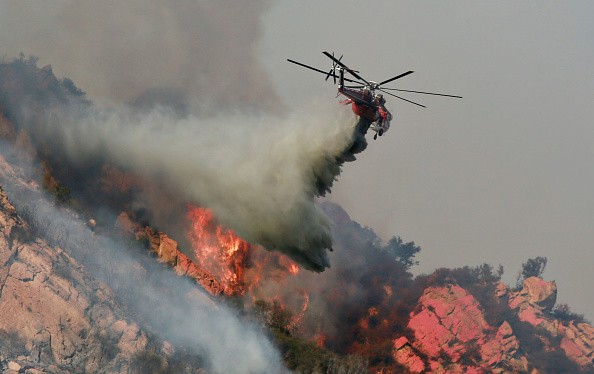Apart from a nearly 100,000-acre burn scar, the Woolsey Fire that happened in November 2018 at Southern California's Los Angeles and Ventura counties left high amounts of fecal bacteria and sediments in the nearby coastal waters.

Wildfire Linked to Changes in Water Quality
Following the massive wildfire in Southern California, scientists studied coastal water quality for months. Their findings were a wake-up call.
According to this study published in Scientific Reports by researchers, the presence of fecal indicator bacteria and the water's turbidity, or cloudiness, are two conventional measures for coastal water quality following the fire.
Humans and other warm-blooded animals produce fecal indicator microorganisms in their gastrointestinal systems. They don't cause harm, but they do point to the existence of potentially hazardous germs and pathogens in feces.
Additionally, turbidity has various meanings. Marine life, such as kelp and phytoplankton, cannot thrive in water that is cloudy or muddy.
An intern at NASA's Jet Propulsion Laboratory claimed that after the fire, they witnessed substantial changes in water quality, particularly near beaches draining the charred region. Marisol Cira, main author of the paper and a UCLA Ph.D. candidate, agreed.
The total coliform bacteria and enterococcus, as well as the magnitude of the turbidity plume, were significantly greater than pre-fire levels in those sites, as per Phys.org.
This particular group of fecal indicator bacteria identified in soil, on plants, and in human waste was 10 times greater in post-fire months than in any of the previous 12 years' worth of data, according to the researchers.
As a result, the level of Enterococcus, which indicates the presence of germs that can cause gastrointestinal illness, was 53 times higher than what is considered safe for recreational water use.
Bacteria levels were high through February 2019, and it was another six months before they returned to pre-fire levels; turbidity remained high for three months before reverting to normal.
Why is Wildfire to Blame?
When it rains, soil absorbs a lot of the water, preventing a lot of bacteria and debris from making their way to the coast. However, this is not the case following a fire.
Co-author Christine Lee of JPL's study said that when a forest fire burns, it causes an increase in vegetation litter and affects the chemical makeup of the soil, making it difficult for the soil to absorb water.
Instead of soaking into the soil, rain flows into local waterways and coastal systems, carrying sediment and bacteria along with it.
The number of post-fire fecal indicator bacteria in the water was also examined under various weather circumstances by the researchers. However, in both wet and dry weather conditions, the average monthly bacteria levels increased dramatically and lasted longer than pre-fire levels.
Luke Ginger, a scientist and study coauthor from the Santa Monica, California group Heal the Bay, noted that spikes in bacteria in the water usually only last a day or two. However, for months following the fire, the bacteria levels remained elevated. That was a major source of anxiety.
Climate Change May Worsen Fire Effects on Water Quality
It's been four years since California experienced seven of its largest wildfires on record, a trend that is expected to continue.
Ginger said: "Climate change will likely exacerbate the effects we see here in terms of water quality as wildfire and rainfall patterns continue to change. A key part in protecting our ecosystems and communities is understanding these emerging threats and spreading awareness about them," according to Global Climate Change.
A forthcoming NASA project dubbed KelpFire will look at the consequences of the 2018 Woolsey Fire on other California coastal watersheds. This may provide more information about how fire-related impacts, like those highlighted in this study, affect the coastal ecosystem as a whole, including kelp forests.
Related Article : Study Offers a Six Step Recommendation to Help Improve Water Quality
For more news, updates about water pollution and similar topics don't forget to follow Nature World News!
© 2026 NatureWorldNews.com All rights reserved. Do not reproduce without permission.





